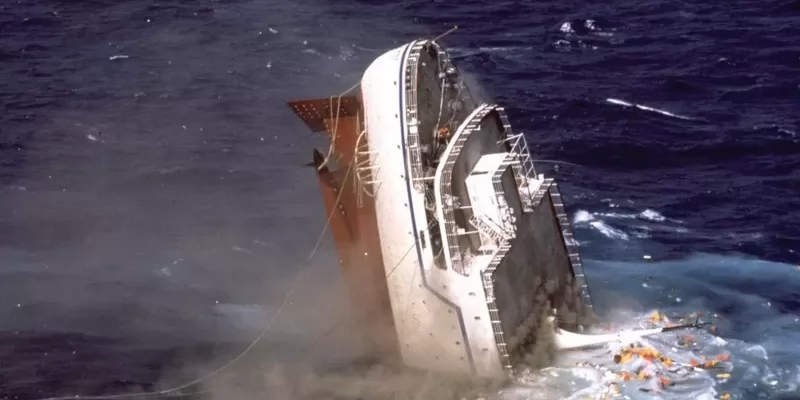In the illusion of the European summer, where people find themselves, with determined spite and melancholic post-pandemic nostalgia, enjoying everything and at the cost of everything, winter promises 40-knot winds and 9-meter waves. Things are looking bad: the crisis dragged on from the pandemic, the war in Ukraine, the energy crisis, and the already certain stagflation will make the corporate seas non-navigable waters in the coming months. Will company managers be up to the task, or will they adopt the cowardly attitude of the crew of the Oceans?
Moss Hill made his living working as a guitarist on cruise ships. It was during dinner that night, aboard the Oceans Cruise, that he realized just how severe the storm was. Earlier in the day, gale-force winds and heavy rains had delayed sailing several times for the final leg of the cruise to Durban. But with no sign of conditions improving, the captain decided to weigh anchor, and the Oceans, with 581 passengers and crew on board, sailed into 40-knot winds and 9-meter-high waves. Within hours after dinner, the Oceans was sinking.
To the surprise of Moss Hill and the 581 passengers, when they tried to fiend the captain and crew, they found that they had fled in a lifeboat. In the absence of the crew, that night the inexperienced guitarist was the great hero and managed to save all the people on board alive.
In the illusion of the European summer, where people find themselves, with determined spite and melancholic post-pandemic nostalgia, enjoying everything and at the cost of everything, winter promises 40-knot winds and 9-meter waves. Things are looking bad: the crisis dragged on from the pandemic, the war in Ukraine, the energy crisis, and the already certain stagflation will make the corporate seas non-navigable waters in the coming months. Will company managers be up to the task, or will they adopt the cowardly attitude of the crew of the Oceans?
There is a very simple way to tell if they are not up to the task. To do this, «leaders» only must do three things: set lackluster goals, cut costs, and constantly tinker with the structure of the organization.
This brings to the table at least two severe short- and long-term impacts that are lethal for organizations. First, one tap turned off is exploration, innovation, and continuous improvement. The ship is left at half throttle, with only one engine, and at the mercy of the wind and the waves. As the evidence shows, the abandonment of these vital aspects ends up becoming a saving, yes, but a saving of the company’s future prosperity. It is bread for today and hunger for tomorrow, increasing the probability of leaving the ship adrift.
Secondly, these actions result in a loss of employee and customer satisfaction, motivation, and loyalty. Many studies, including this one by Gartner, have shown that cost reduction has a severe – and often unforeseen – impact on employee experience and overall company productivity. It’s like convincing the crew that the best thing they can do is escape the ship before it’s too late.
Setting mediocre targets, cutting costs, and constantly tinkering with the organization’s structure also have one important thing in common: they do not require any management skills. It is easy to cut costs by laying off workers or refusing to authorize expenses. It is even easier to simply add 20% to last year’s sales or cost targets and call it a reality. The easiest thing of all is to change the boxes and lines on the organization chart with a click of the mouse.
All these actions are ultimately signs that reveal managers who are totally incapable of exercising effective structural improvement leadership. In many cases, it is even the result of political expediency and saving one’s life at the expense of others. Like the crew of the Oceans: it’s running away from the sinking ship. And there is not always a Moss Hill to save the night.







